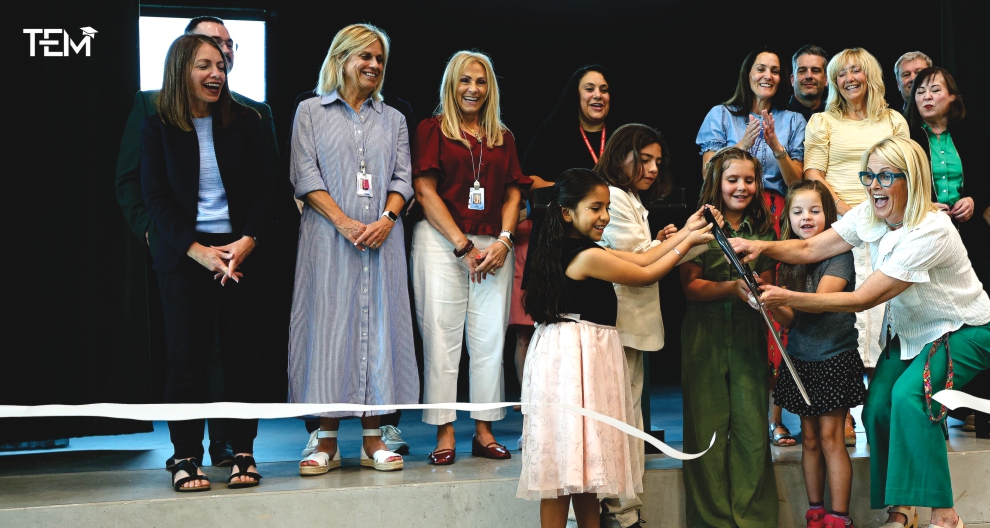Did you know that approximately 7.6% of children in the UK have Developmental Language Disorder (DLD)? That’s equivalent to about one million children or two in every class of 30.
DLD is a neurodevelopmental condition that affects a child’s ability to acquire, understand and use language. It is a lifelong condition and one that can significantly impact their communication skills, learning and social interactions.
No matter whether you’re a parent, carer or teacher, supporting children with Developmental Language Disorder requires patience, creativity and a structured approach.
So, if you’ve found yourself in this position and you’re in need of some advice, here are some simple strategies and tips to help you support their learning.
Simplify your own language
When speaking to children with DLD, it’s vital that you always use simple, clear sentences. You should also repeat the key points as this helps to reinforce understanding and learning.
It’s also a good idea to stress important keywords to emph
asise these. This can be particularly helpful for the child when they are trying to pick up basic words and phrases that help them communicate on a daily basis.
As well as your language, you should also break tasks down into smaller steps and give them one, clear instruction at a time before stopping to check for their understanding. You could even ask the child to repeat the instructions back to you in their own words to ensure comprehension.
Create a supportive and engaging learning environment
One of the biggest ways you can support children with DLD is by creating a supportive environment for them to learn in. This means minimising distractions and ensuring that the classroom or learning space is as quiet as possible, allowing them to focus.
You should also make sure to have visual supports around their learning space, including visual aids like charts, pictures, posters or anything else they might find helpful and engaging. All of this can help to reinforce verbal instructions and enable them to learn keywords and phrases.
Incorporate multisensory learning into their daily routine
As well as using visual aids like images and flashcards in the learning environment, you should also create a multisensory experience to help convey meaning and engage their other senses on a deeper level.
There are several ways you can do this, including incorporating hand gestures when you speak to them, as well as arranging hands-on activities like building blocks, puzzles or games.
Take it slow and stay positive
You should take the child’s learning and development slowly, introducing new words gradually. By breaking this down into different lessons and smaller tasks, you can make learning new words more manageable and decrease the risk of overwhelming them.
You should always allow them extra time when speaking as this gives them a better opportunity to process information and respond without becoming frustrated or disheartened.
By being patient and celebrating successes, no matter how small, you can help them to build their confidence.
Build their self-esteem
Similarly, it’s vital to do all you can to boost the child’s self-esteem, including recognising their hard work. Praise and encouragement can help the child to feel more confident in their abilities.
Plus, you should focus on their areas of strength and weakness. This helps you to identify and nurture the areas where the child excels, to keep them feeling positive and to help them succeed in areas beyond language.
Encourage interaction and real-life scenarios
There are lots of ways you can help children with DLD to learn through everyday activities. They may find it easier to learn words this way, for example, simply naming objects during a walk or playtime.
You should also encourage social interaction, partnering them with their peers for activities that encourage conversation and cooperation. Role-playing games can be a great example of this as they allow the child to practice conversational skills in a fun, low-pressure way.
Promote reading aloud as much as possible
Whether at home or at school, reading aloud can help children to hear language in context and strengthen their own communication skills.
This should include interactive reading in which you ask questions about the story you’re reading and encourage the child to predict what will happen next.
If they are feeling up to it, you could even ask them to read aloud back to you but don’t put too much pressure on them to do so if they’re not feeling comfortable.
Utilise technology
In today’s digital world, there are loads of great educational tools you can utilise. For example, educational apps are designed to support language development through interactive games and activities.
You might also wish to utilise speech-to-text tools to support children who struggle with writing, enabling them to express themselves better.
Make sure to do some research into what’s available and what the children prefer to use, looking at what technology best supports their learning. This will point you in the right direction.
Work with a Speech and Language Therapist (SALT)
Most children suffering from DLD will need to work with a speech therapist to create specific, achievable language goals.
Once they have been given an actionable plan by a speech therapist, you can incorporate some of these recommendations for exercises and activities, as well as other useful techniques, into their daily learning.
Create an Individualised Education Plan (IEP)
Following on from this, once you have detailed advice from the child’s speech therapist, you can develop an IEP with specific goals tailored to their needs.
This should include regular assessment of their progress and adjusting their plans and activities accordingly.
Stay informed and communicate effectively
Finally, regular communication between therapists, teachers and parents is crucial for the child to progress. All parties must stay informed about the progress and challenges the child is facing, as well as stay up to date on the latest research and learning strategies for DLD.
By integrating these strategies into your daily routines, you can create a more inclusive and effective learning environment for children with Developmental Language Disorder.
Also Read: The Role Of Language Services In Global Learning And Development











